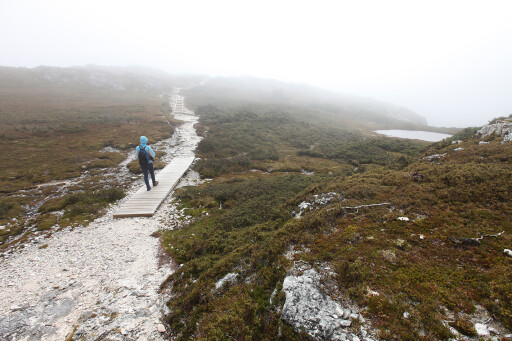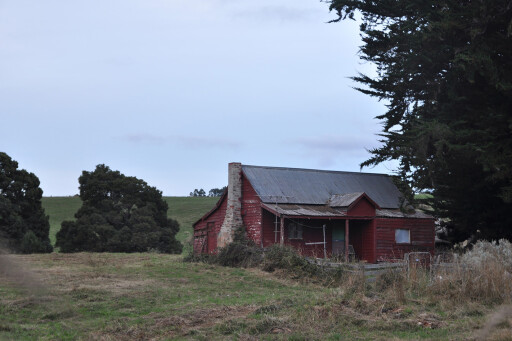
WE were driving on the powdery white sand of Ocean Beach (Tasmania’s longest continuous stretch of beach) in Strahan, on the state’s west coast.
This was first published in 4X4 Australia’s June 2012 issue.
The topic of conversation in the cab had turned to how to spend the rest of the day, and the nearby Henty Dunes were tabled as an option.
“It’ll be fun, but there are plenty of sand dunes at home,” I said to Paul, who was driving at the time. I didn’t want Stockton Beach, I wanted to find (and photograph) something that would really show we were in Tasmania; the western wilderness.
 Master of non sequitur, he brought the vehicle to a stop and said: “Is that a whale bone?” I craned my neck to see out his window – the long, ivory-coloured object with rounded ends wouldn’t have looked out of place suspended in a museum atrium.
Master of non sequitur, he brought the vehicle to a stop and said: “Is that a whale bone?” I craned my neck to see out his window – the long, ivory-coloured object with rounded ends wouldn’t have looked out of place suspended in a museum atrium.
We continued slowly on until a sickly odour seeped through the windows and its source opened up before us: strewn across the beach were two almost-complete spinal columns, scattered vertebrae the size of cinder blocks, and piles of blubber and sinewy flesh, hazy with buzzing flies.
We got out of the Jeep Grand Cherokee, taking a moment to adjust to the absence of engine noise – replaced by crashing surf and the whistle of dry, hot wind – and wandered among our discovery, awe-struck.
This is the wild-west coast of Tasmania. Continue west across the Indian Ocean and you won’t hit land again for more than 10,000km until South America, landing in southern Argentina and undercutting the African continent altogether.
 We pulled our collars down from over our noses and retreated back to the Jeep; outside the mid-morning temperature had already exceeded 30°C in what was turning out to be a record-breaking heatwave for much of the state. Two days previously, we’d been concerned about not packing beanies.
We pulled our collars down from over our noses and retreated back to the Jeep; outside the mid-morning temperature had already exceeded 30°C in what was turning out to be a record-breaking heatwave for much of the state. Two days previously, we’d been concerned about not packing beanies.
The sun had barely risen and Devonport was still asleep when we’d disembarked the Spirit of Tasmania well-fed and rested and excited to be setting foot (and tyre) on the Apple Isle for the first time. So we headed straight onto Tassie’s characteristically narrow, winding bitumen through rural pastures, stopping for breakfast in the small ex-mining town of Sheffield – famous for its public murals, many honouring its mining heritage.
While not always as artfully portrayed, almost all of the towns we would pass through in the next week had in some way risen out of mining (or logging, or some other primary industry) and subsequently contracted either with its exodus, or with the advent of fly-in, fly-out workers.
We arrived at our first destination, Cradle Mountain National Park, before 8.30am. Over the course of our trip we frequently passed signs warning of driver fatigue, but I couldn’t help but think that in a state you can cross east to west in about five hours, those warnings seemed less relevant.
 World Heritage-listed Cradle Mountain NP is possibly the state’s best-known tourism destination, attracting hikers from all over the world. The visitors centre offers everything its hordes of arrivals could possibly need, so we splurged on expensive gift-shop beanies (the Jeep told us the outside temperature was a frigid 12°C) and replacement laces for my hiking boots.
World Heritage-listed Cradle Mountain NP is possibly the state’s best-known tourism destination, attracting hikers from all over the world. The visitors centre offers everything its hordes of arrivals could possibly need, so we splurged on expensive gift-shop beanies (the Jeep told us the outside temperature was a frigid 12°C) and replacement laces for my hiking boots.
The plan was to combine a few of the shorter walks for a half-day hike. The Overland Track for which the area is famous takes around six days.
Top 5 tips for driving on the beach
Starting at the flat and family-friendly Dove Lake Circuit track, the further we climbed, the stronger the winds and icy, horizontal rains became. The lookouts were a sea of white mist and the wild weather and lack of visibility contrasted surreally with the civilised boardwalk-style track snaking across the grassy plateau. We sheltered behind a large boulder to eat our packed lunch, and finished with a descent through thankfully protected temperate rainforest.
Paul and I returned to the Jeep exhilarated but cold and rain-soaked three and a half hours later, switching on the heat and worrying about our bags packed with shorts, T-shirts and swimmers. We needn’t have.
 Our first night was spent in Zeehan, about halfway between Cradle Mountain and our next stop on the coast, Strahan. Zeehan’s wide roads lined with timber cottages were mostly empty and the streets were eerily silent. The kind of silence that makes you want to whisper.
Our first night was spent in Zeehan, about halfway between Cradle Mountain and our next stop on the coast, Strahan. Zeehan’s wide roads lined with timber cottages were mostly empty and the streets were eerily silent. The kind of silence that makes you want to whisper.
Albeit, we had visited outside the opening hours of the town’s main tourist drawcard – the Pioneer Museum – but managed to find some life in the local pub, the Heemskirk Motor Hotel.
We spent the remaining light of the day wandering the streets, looking at an old steam train behind the closed museum fence and wondering at the size and grandeur of the 19th century buildings.
At its peak, Zeehan was home to 10,000 people and 26 pubs (the latter a statistic frequently used as a measure of a town’s past size and success), but today has a permanent population of about 900.
 It’s difficult to imagine the streets humming with people spilling out of the pubs and onto the streets that we now stood on, a century later, quietly alone. The story was a recurrent one throughout the region.
It’s difficult to imagine the streets humming with people spilling out of the pubs and onto the streets that we now stood on, a century later, quietly alone. The story was a recurrent one throughout the region.
One of Tasmania’s highest waterfalls – at 104 metres – is located 10km north-east of Zeehan, and the 4X4 track to their base was a highlight on our itinerary.
Montezuma Falls are accessible from one side on foot or mountain bike (7km, four hours return), or on a separate 14km four-wheel drive track. Rated ‘moderate’, it consisted of a narrow, rutted dirt track with deep muddy holes and a few steep, rocky inclines.
Having had ample opportunity to stretch the Jeep’s legs on the winding country roads, we couldn’t wait to get the wheels dirty.
 Stopping regularly for photos, it took three hours to complete on the way in, and two hours on the return trip. The Montezuma Falls track is also the gateway to the Ring River Track – but all the signs, brochures and questioned locals suggested it wouldn’t be suited to our showroom-standard, solo-travelling Grand Cherokee.
Stopping regularly for photos, it took three hours to complete on the way in, and two hours on the return trip. The Montezuma Falls track is also the gateway to the Ring River Track – but all the signs, brochures and questioned locals suggested it wouldn’t be suited to our showroom-standard, solo-travelling Grand Cherokee.
Australia's best off-road destinations
Becoming increasingly sceptical of the very existence of the waterfall after three hours in low-range and with our wheel-arches caked thick with mud, we finally made it to the track’s end. From here it was just 200m on foot and across an impressive swing bridge to reach the base of the towering, three-tiered waterfall.
We’d had the entire 4X4 track to ourselves, but met a couple of hikers eating sandwiches at the base of the falls when we arrived. We took a few photos, splashed our faces with the sweet, fresh water and returned to the swing bridge where we encountered another couple of tourists. Western Australians, they were wearing matching tourism-branded wool-trimmed vests – they too had been surprised by the cold, they told us.
 We bade them farewell and returned to our vehicle, expecting to see their 4X4 parked nearby. Afterall, they weren’t carrying any water or backpacks… and who still wears a woollen vest at the end of a 7km hike? There were no other 4X4s in sight, so we spent the return trip spooking ourselves about ghost-tourists that haunt 4X4 tracks in naff souvenir outfits.
We bade them farewell and returned to our vehicle, expecting to see their 4X4 parked nearby. Afterall, they weren’t carrying any water or backpacks… and who still wears a woollen vest at the end of a 7km hike? There were no other 4X4s in sight, so we spent the return trip spooking ourselves about ghost-tourists that haunt 4X4 tracks in naff souvenir outfits.
From Montezuma Falls our plan was to continue west to Strahan, where we’d discover a record-breaking heatwave and whale graveyard, make side trips to the famously scarred Queenstown and the isolated hippy village of Trial Harbour, and continue on through the remote Tarkine wilderness, before spending our last night at the foot of The Nut.
Keep an eye on 4x4australia.com.au for part 2

COMMENTS